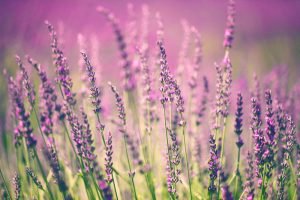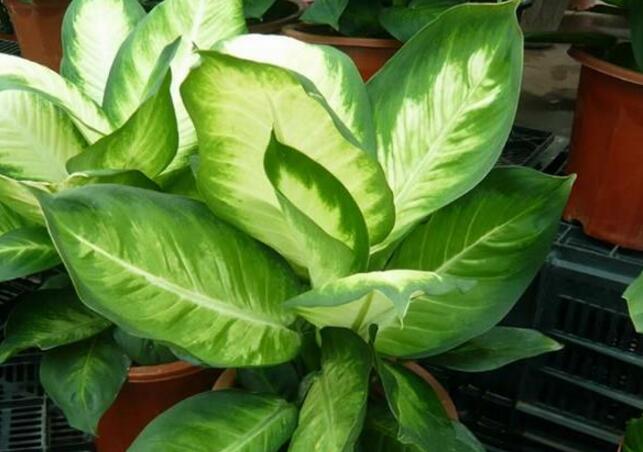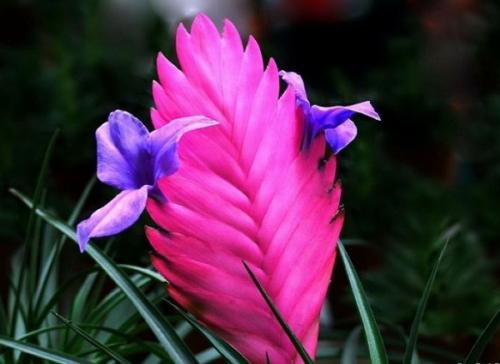Represents romance and aestheticism-planting time and maintenance methods of lavender
Lavender (Latin name: Lavandula angustifolia Mill.) also known as perfume plant, spirit vanilla, vanilla, yellow vanilla, Lavender. Belongs to the lavender genus of Labiatae, a small shrub. Stem erect, stellate tomentose, old branches grayish brown, with striate exfoliated cortex. Leaves striate or lanceolate, gray stellate tomentose or sparsely or densely, gray-white or olive-green when dry, entire and revolute.
Verticillate inflorescences gathered into intermittent or subcontinuous spikes at the top of branches; bracts rhombic-ovate, bracteoles inconspicuous; calyx ovate-tubular or subtubular; Corolla ca. Twice as long as Cao, tube extending, covered with glandular hairs in throat. Nutlets oval, smooth. Native to the Mediterranean coast, Europe and Oceania islands, and later widely cultivated in the United Kingdom and Yugoslavia. Its leaf-shaped flowers are beautiful and elegant, and the blue-purple inflorescences are long and beautiful. It is a new perennial cold-resistant flower in the courtyard. It is suitable for planting flowers in clusters or strips, and can also be watched in pots.

Cultivation environment: lavender likes warm climate, cold-resistant, drought-resistant, light-loving and waterlogging-resistant. It has lax requirements on soil, resistance to barren, and prefers neutral alkaline soil with loose and good drainage. Lavender is difficult to be planted in the south because it is not resistant to waterlogging, but as an aromatic plant, lavender is an excellent potted flower.
Sowing: lavender seeds are small, suitable for seedling transplanting, warm areas can be sowed at any time throughout the year, and cold areas should be sowed in spring. Before sowing, the land is leveled and watered, and after the water seeps, the seeds are evenly sown, then covered with a layer of fine soil, which is 2-3 times thicker than the seeds, and covered with grass or plastic film to preserve moisture.
Watering: lavender likes dry environment and is not resistant to dampness. the family must avoid frequent watering, basin soil or ground can not accumulate water, should maintain ventilation. Pour water once after putting on the basin, and the principle of watering after survival is "see dry and wet". When watering, we should pay attention to that the water should not be poured directly on the leaves, nor should the soil be splashed on the branches and leaves to avoid diseases. It can also spread a layer of pebbles on the soil surface of the flowerpot, which is not only beautiful, but also can prevent disease. If you use tap water, it is best to use it in the sun for two days.
Rizhao: lavender is a long-day plant. Light plays a very important role in its development and the formation of aromatic oil. excessive shading will cause overgrowth and susceptibility to disease at the same time, but it is best to do some shading treatment in hot heat to avoid direct sunlight.
Fertilization: lavender does not have high requirements for fertilizer. In the spring when it grows rapidly (March-May), compound fertilizer of nitrogen, phosphorus and potassium can be applied monthly, and the solution can be irrigated with a concentration of 1%. Too much nitrogen fertilizer can easily lead to futile growth.
Construction: after flowering, cut off the first node under the flower and trim the plant into a hemispherical shape. Usually, cut off the dry branches at any time. In order to control plant height or get better plant type, proper re-pruning in late summer and early autumn to promote new shoots. When the seedling is too dense, it can be suitable for the seedling, and when the seedling height is about 10CM, it can be transplanted. It grows rapidly and needs to be changed once a year.
Pest control: few pests. The disease is mainly root rot, which has the highest incidence in high temperature and stagnant water environment. Prevention and cure method: irrigate the root with 800 times solution of carbendazim and chlorothalonil once a month, especially from June to October, pay attention to prevent stagnant water and keep the air dry.
Time: 2019-04-22 Click:
- Prev

Maintenance methods and matters needing attention of evergreen
Evergreen nickname is iron pole, open throat sword, winter grass and so on. It is a traditional ornamental flower in China and Japan. Its leaves are green all the year round, so it is called evergreen. Its leaves are green, the fruit is ruddy, it does not wither in winter, and the green leaves and red fruits are particularly dazzling, enchanting and pleasing to the eye.
- Next

Iron orchid blooming and matters needing attention in normal maintenance
When Tieran blossoms in early spring, the florescence is concentrated in January-March, and the viewing time is very long, up to 70 Murray 80 days. There are purple bracts on the iron orchid, but this is not a flower, its flowers are dark purple and relatively small, stretching out from the bracts. During the flowering of Tielan
Related
- Fuxing push coffee new agricultural production and marketing class: lack of small-scale processing plants
- Jujube rice field leisure farm deep ploughing Yilan for five years to create a space for organic food and play
- Nongyu Farm-A trial of organic papaya for brave women with advanced technology
- Four points for attention in the prevention and control of diseases and insect pests of edible fungi
- How to add nutrient solution to Edible Fungi
- Is there any good way to control edible fungus mites?
- Open Inoculation Technology of Edible Fungi
- Is there any clever way to use fertilizer for edible fungus in winter?
- What agents are used to kill the pathogens of edible fungi in the mushroom shed?
- Rapid drying of Edible Fungi

